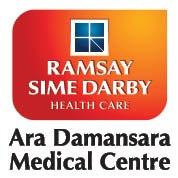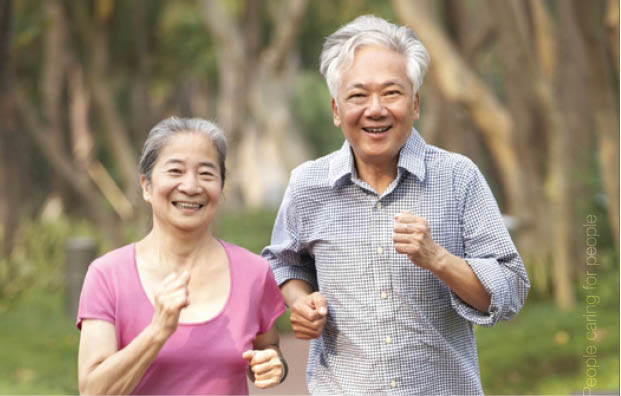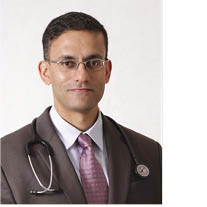Total knee replacement (TKR) is the gold standard of treatment of end-stage arthritis of the knee for more than 50 years. The success of TKRs has placed greater demands on the surgeon and the outcomes of surgery. These days it is not uncommon to see patients in their 40s and gos requiring the surgery. To improve the outcomes of surgery, apart from meeting patient expectations, several risks and complications need to be addressed.
THROMBOEMBOLISM
The most devastating complication of TKR is obviously death. Death can result from pulmonary embolism (PE) one of the consequences of deep vein thrombosis (DVT). Among lower limb operations, TKR carries the highest risk of DVT.
Anticoagulants are used to reduce the incidence of DVT. The incidence of silent DVT without the use of anticoagulants is as high as 77% to 84% and the risk of death from PE as high as 3%. Even with the use of anticoagulants and intermittent mechanical compression the risk of DVT is as high as 30%.
Advanced pain management techniques allowing patients to walk the day after surgery reduced the risk of DVT from 30% to 1%. Dr. Siva Ariaretnam, Consultant Orthopaedic Surgeon of Ramsay Sime Darby Health Care, Kuala Lumpur co-published another such study showing that the incidence of DVT was potentially even lower if patients were able to walk at least 5 metres the day after surgery.
Traditionally epidural analgesia or regional nerve blocks were used to control pain. This reduces muscle power transiently rendering patients unable to stand or walk for 1 to 2 days after surgery. There was also a risk of dangerous bleeding in the epidural space or around the peripheral nerve with anticoagulation and hence these blood thinners are often withheld until the catheter is removed. Epidurals also require the use of uncomfortable urinary catheters which also increased the risk of infection.
Dr Siva Kumar Ariaretnam
EARLY MOBILISATION
Today Dr. Siva combines advanced pain management protocols with a minimally-invasive surgical technique, allowing patients to bend their operated knee as they are being wheeled out of the operating room and walk as early as 8 hours after surgery. Some are even able to climb stairs the day after surgery.This is achieved without the use of epidural analgesia or regional nerve blocks. Urinary catheters are hence unnecessary. All patients receive anticoagulation and pain is managed mostly with oral medications alone avoiding the use of injections after surgery.
INFECTION
Another potentially devastating risk of surgery is wound infection. This could culminate in the need to remove the implants and to do multiple surgeries thereafter. Besides good surgical technique and the judicial use of antibiotics, the use of laminar airflow operating rooms (ORs) or body-exhaust suits (BES) have been shown to reduce the risk of infection two to threefold .
When BES and laminar-airflow is used in combination however, there was a 10-fold reduction of infection rates in a large multicentre trial. Similar success were initially published by Sir John Charnley, the father of TKR surgery in his classic paper in 1964. Outcomes of TKR surgery also depends on meeting patients’ expectations from surgery. These are different in different regions of the world .Asian patients are keen to squat after surgery though this is rarely a necessity for patients in North America . While squatting is not encouraged, there is little evidence that it leads to early failure .
LONG-TERM SURVIVORSHIP
A leading cause for intermediate-term failure after TKR surgery is poor restoration of alignment during surgery. Besides proper surgical technique, computer-assisted surgery (CAS) was purported to reduce the risk of malalignment .
CAS however increases the operative time, the number of personnel in the OR, the instrument inventory and utilise overhead tracking monitors that potentially disrupt laminar flow, all of which has been shown to independently increase the risk of infection. CAS also introduces a risk of fractures occurring 4 to 8 weeks after surgery and the rare but potentially devastating risk of vascular injury that could culminate in an amputation of the limb.The potential risks of CAS are hence believed to outweigh its benefits. Moreover, several meta-analysis of the literature has shown that CAS does not consistently restore the alignment compared to conventional surgery.
PATIENT-SPECIFIC INSTRUMENTS (PSI)
Patient-specific instruments (PSI), a fairly recent technology utilise MRI or CT scans of patients’ limbs to accurately mould cutting blocks using 3-D printing technology that fit the bones in the knee like a piece of a jigsaw. These blocks are then used to accurately cut the bones and hence improve the alignment. PSI reduce several steps of surgery, the number of instruments used, the number of OR personnel and avoid the use of overhead tracking monitors of CAS all of which may potentially reduce the risk of infection while improving alignment and the long-term outcome of surgery .
PSI surgery is ‘performed’ virtually before even entering the OR, sizes of implants to be used are determined beforehand and potential peculiarities of a patients’ knee is known in advance as opposed to CAS or conventional surgery . The use of intramedullary rods are avoided reducing the risk of fat embolism especially in compromised patients with bilateral surgery.
ALTERNATE TREATMENTS
TKR is the gold-standard of treatment for end stage arthritis of the knee. However in selected patients other procedures may be more appropriate . In young active patients, a joint preserving surgery such as an osteotomy around the knee may be appropriate to allow the patient to return to sports. Unicompartmental (half) knee replacement may be the surgery of choice in some young or elderly patients .Arthroscopic surgery is appropriate for patients with early degeneration not responding to medications and physiotherapy.
With these and other emerging technologies, TKR surgery is becoming safer and is able to meet increasing patients’ expectations more consistently. Methods to improve the longevity of implants and the improvements in the outcomes of revision TKR surgery are helping to meet the needs of younger patients requiring this procedure.
+(603) 5639 1212 m mcu@simedarby.com n www.ramsaysimedarby.asia






